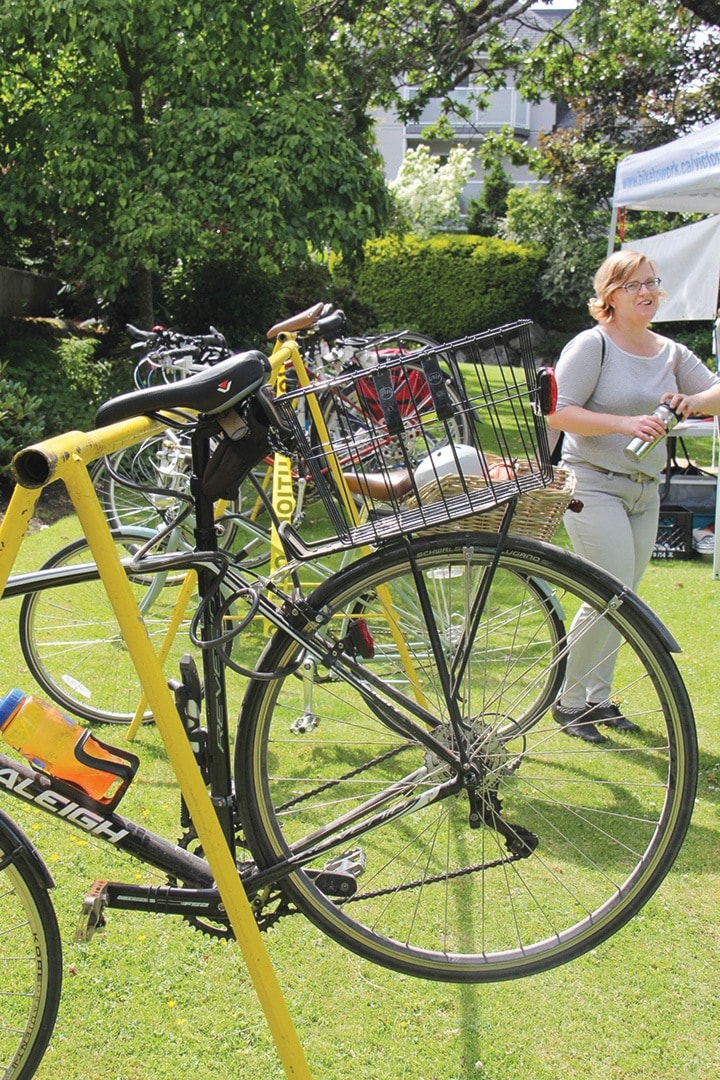Cycling is popular with Canadians of all ages, few places more so than here in Oak Bay.
Whether riding for exercise, recreation or transportation, cycling is a safe and enjoyable activity for riders of all ages who respect the rules of the road and keep a safety-conscious attitude, says Oak Bay Fire Capt. Rob Kivell, from the Fire Prevention Division.
“A bicycle is classified as a vehicle, which belongs on the road. Cyclists have the same rights and responsibilities as drivers of motor vehicles. You must obey the same rules of the road when riding your bike as you do when driving your car,” Kivell notes.
“Traffic laws help road users predict each other’s actions. Cyclists, like motorists, must ride on the right side of the road (except on two-way designated bicycle paths), be sober, stop for stop signs and red lights, signal turns, and yield to traffic that has the right-of-way.”
Additional safety measures help cyclists be seen and heard. Since bikes are quiet vehicles, a working bell or horn helps announce your approach. Reflective tape, reflectors and a front light make you more visible to other road users.
Always ride defensively, anticipating the actions of other road users to avoid a collision and staying alert for all hazards. A car door could open at any time. A pedestrian or animal could dart onto the road without warning. Debris, grates or holes in the road could make you veer or crash.
Whether it’s daylight, dawn, dusk or dark, make yourself easy to see. One of the reasons motorists often give for hitting cyclists is that they did not notice them. A cyclist may be hard to spot from when a vehicle is traveling relatively fast. When the sun is very low, cyclists and motorists can be momentarily blinded by the glare.
Bright clothing catches people’s attention in the daytime – the brighter the better. If you must ride at night, go beyond the required reflectors and front light. Wear clothing made with retro-reflective material, or retro-reflective tape on your clothing, to ensure you can be seen.
Protect your head by wearing a CSA-approved bicycle helmet; other types of sport helmets won’t do, as they are designed for different types of impact. The helmet should fit snugly, level and square on the forehead with the front covering the forehead. If it has been in a collision, it has done its job. Replace it.
Is Your Bike Safe?
• First, your bicycle must fit you correctly. If it’s too big or too small, you won’t be able to control it adequately. You should be able to straddle it comfortably with both feet on the ground.
• Next, keep it well-maintained. Check it regularly to be sure it’s safe to ride.
• Are the brakes adjusted properly, with brake pads and cables in good condition?
• Is the chain clean and oiled? (On 10-speeds, a chain that sags means the rear derailleur needs repair.)
• Do all the gears work well?
• Are all bolts tight?
• Are the wheels centered and secure?
• Are the tires in good condition with the right amount of air pressure?
• Do you have an emergency tool kit, prepared in case a tire goes flat or a screw comes loose?
